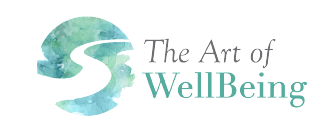When Doing Isn’t Possible
For years, my group coaching course and website have been called The Art of WellBeing. But here’s something I’m just now realizing: I tend to judge myself—not on my wellbeing—but on my “welldoing”. I rate myself by how much I accomplish, serve, or produce. This awareness is giving me much to pray about and ponder.
For the past six months, I’ve lived with persistent pain. Maybe it’s my hip. Maybe it’s my lumbar spine. MRIs have ruled out a hip replacement. I’ve had stretches when I could walk and even do workouts, but I’ve never known whether movement helps or harms. Recently, the pain has intensified. I’ve had to stop walking altogether until I can begin physical therapy or seek additional medical advice.
And I’ve learned something humbling about myself: I don’t do well emotionally when I can’t move physically. My mood, my energy, even my sense of identity seem tied to my ability to “go and do.” I measure my days by what I accomplish, how I serve, what I produce. But this slowdown is making me ask: when I can’t do as much, can I still be well?
That question has led me to think about the difference between WellDoing and WellBeing. When we talk about wellbeing, we often describe habits and practices—things we schedule and check off. But the practices themselves are not the goal. They shape the person we are becoming. We write to become a writer. We meditate to become a person of grounded presence.
The challenge is that we often over-emphasize the actions and neglect the way habits are meant to shape our being. And if I’m honest, I am much better at the doing than the being.
My persistent pain is exposing this imbalance. I am used to serving, moving, producing, giving. I am not nearly as practiced at receiving. Our culture, and much of our faith formation, trains us to keep going and doing. Even in prayer, we tend to talk at God—filling the space with our words and ideas of what should happen. We are far less comfortable simply sitting in God’s presence, listening, yielding, letting go of our agenda.
But receptivity—true openness—is where transformation happens. To receive is to remember that the world keeps spinning without my striving. It is to admit that my worth is not the sum total of my actions. It is to release the illusion of control and trust that something deeper is holding me.
Receptivity might look like rest, Sabbath, stillness, listening, breathing, or being honest about our limits. It’s not passivity; it’s participation in a different way—an inflow rather than an outflow. It’s the deep breath that allows the next step to be taken from a place of groundedness instead of reactivity.
This hip pain is forcing me to live with trust—to surrender my plans and productivity and receive what each day brings. Some days that feels like a gift. Other days it feels like loss. But maybe that’s part of the journey from WellDoing to WellBeing: learning that the art of living well is not about how much we can produce, but about how willing we are to be shaped, held, and restored by the One who is the source of all life.
Receive this prayer which I wrote for a group coaching session about healing and wholeness:
God who sees all of me—
the strong parts, the ashamed parts, the hidden parts—
Teach me to love myself as you love me.
Not for who I could become,
but for who I already am.
Let me make room for the pain I carry,
for the stories I’ve buried,
for the emotions I’ve tried to fix away.
Show me the beauty of becoming,
the holiness of the unfinished,
the gift of being whole—not because I am perfect,
but because I am held.
On the journey from WellDoing to WellBeing,
Vicki
